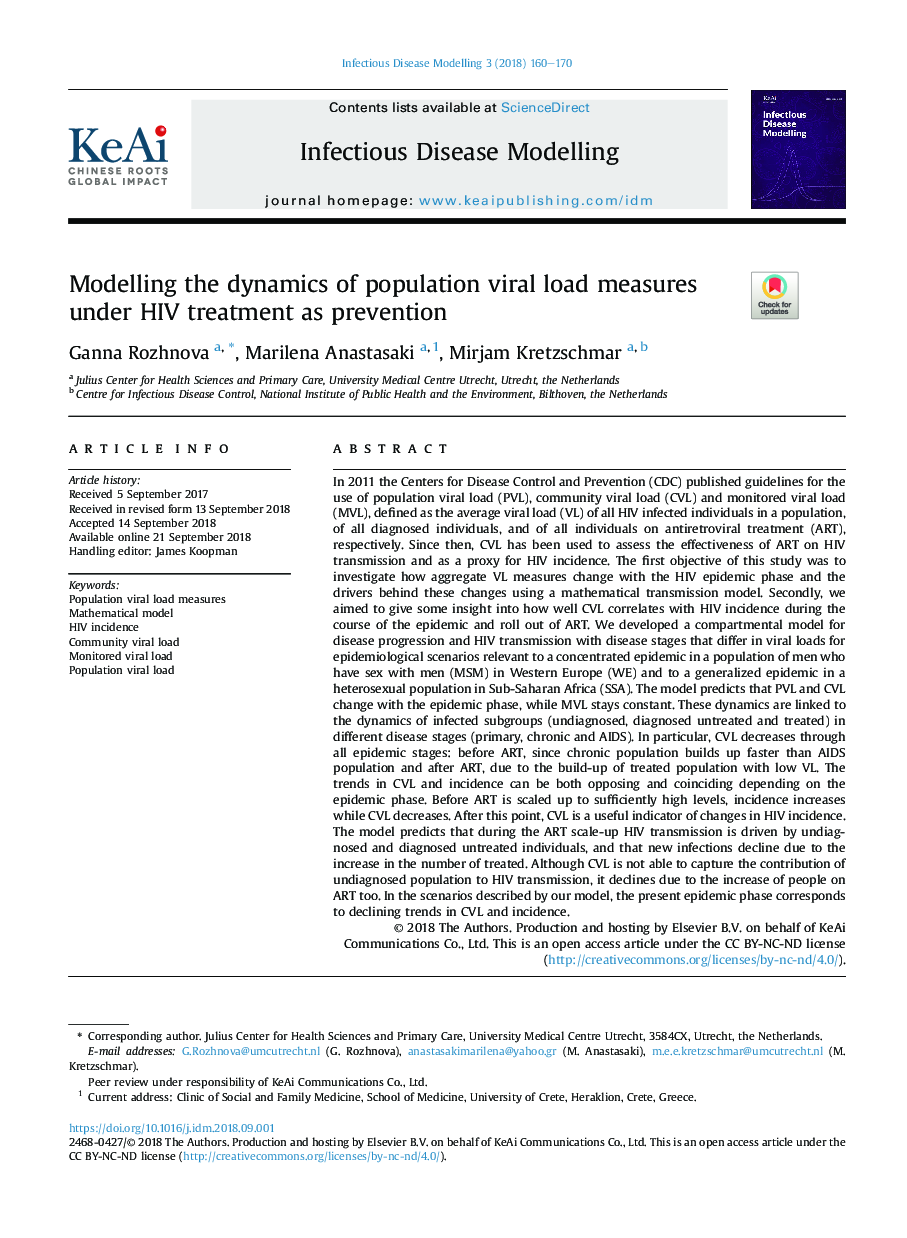| کد مقاله | کد نشریه | سال انتشار | مقاله انگلیسی | نسخه تمام متن |
|---|---|---|---|---|
| 11033640 | 1590566 | 2018 | 11 صفحه PDF | دانلود رایگان |
عنوان انگلیسی مقاله ISI
Modelling the dynamics of population viral load measures under HIV treatment as prevention
دانلود مقاله + سفارش ترجمه
دانلود مقاله ISI انگلیسی
رایگان برای ایرانیان
موضوعات مرتبط
علوم پزشکی و سلامت
پزشکی و دندانپزشکی
انفورماتیک سلامت
پیش نمایش صفحه اول مقاله

چکیده انگلیسی
In 2011 the Centers for Disease Control and Prevention (CDC) published guidelines for the use of population viral load (PVL), community viral load (CVL) and monitored viral load (MVL), defined as the average viral load (VL) of all HIV infected individuals in a population, of all diagnosed individuals, and of all individuals on antiretroviral treatment (ART), respectively. Since then, CVL has been used to assess the effectiveness of ART on HIV transmission and as a proxy for HIV incidence. The first objective of this study was to investigate how aggregate VL measures change with the HIV epidemic phase and the drivers behind these changes using a mathematical transmission model. Secondly, we aimed to give some insight into how well CVL correlates with HIV incidence during the course of the epidemic and roll out of ART. We developed a compartmental model for disease progression and HIV transmission with disease stages that differ in viral loads for epidemiological scenarios relevant to a concentrated epidemic in a population of men who have sex with men (MSM) in Western Europe (WE) and to a generalized epidemic in a heterosexual population in Sub-Saharan Africa (SSA). The model predicts that PVL and CVL change with the epidemic phase, while MVL stays constant. These dynamics are linked to the dynamics of infected subgroups (undiagnosed, diagnosed untreated and treated) in different disease stages (primary, chronic and AIDS). In particular, CVL decreases through all epidemic stages: before ART, since chronic population builds up faster than AIDS population and after ART, due to the build-up of treated population with low VL. The trends in CVL and incidence can be both opposing and coinciding depending on the epidemic phase. Before ART is scaled up to sufficiently high levels, incidence increases while CVL decreases. After this point, CVL is a useful indicator of changes in HIV incidence. The model predicts that during the ART scale-up HIV transmission is driven by undiagnosed and diagnosed untreated individuals, and that new infections decline due to the increase in the number of treated. Although CVL is not able to capture the contribution of undiagnosed population to HIV transmission, it declines due to the increase of people on ART too. In the scenarios described by our model, the present epidemic phase corresponds to declining trends in CVL and incidence.
ناشر
Database: Elsevier - ScienceDirect (ساینس دایرکت)
Journal: Infectious Disease Modelling - Volume 3, 2018, Pages 160-170
Journal: Infectious Disease Modelling - Volume 3, 2018, Pages 160-170
نویسندگان
Ganna Rozhnova, Marilena Anastasaki, Mirjam Kretzschmar,